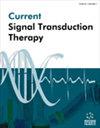Exploring Squalene's Impact on Epidermal Thickening and Collagen Production: Molecular Docking Insights
Q3 Medicine
引用次数: 0
Abstract
Aging is a progressive deterioration characterized by the gradual buildup of physiological alterations as time passes. The aging phenomenon encompasses various interconnected systems within the body, such as the skin, bones, cartilage, and hair. In this study, based on the appropriate properties of squalene, including antioxidant, anti-inflammatory, and skin repair properties, a molecular docking study was designed for the drug squalene and proteins related to the dermis and epidermis pathway and collagen production (including Col3A1, Col1A2, FBN1, Decorin, and HAS2). The docking results indicated that the interaction of squalene with hyaluronan synthetase 2 (HAS2) possessed the highest negative binding free energy value of -10.90 KCal/mol, followed by decorin with a value of -9.99 KCal/mol. Also, the inhibition constant values of squalene- HAS2 and squalene-decorin complexes were equal to 1.61 and 7.51 μM, respectively. It has been stated that decorin (as a small proteoglycan) and HAS2 are involved in controlling the assembly of skin fibrils and the biosynthesis of glucosaminoglycans, respectively. Considering that proteoglycans and glucosaminoglycans play a role in the skin aging process, squalene may be used as an anti-aging agent to induce these pathways and for different purposes. Squalene may be used as a potential agent alone or in combination with other compounds in tissue engineering scaffolds for cosmetic, anti-aging, wound healing, and tissue repair applications.探索角鲨烯对表皮增厚和胶原蛋白生成的影响:分子对接的启示
衰老是一种逐渐恶化的现象,其特点是随着时间的流逝,生理变化逐渐累积。本研究根据角鲨烯的抗氧化、抗炎和皮肤修复等相应特性,设计了角鲨烯与真皮和表皮通路及胶原蛋白生成相关蛋白(包括 Col3A1、Col1A2、FBN1、Decorin 和 HAS2)的分子对接研究。对接结果表明,角鲨烯与透明质酸合成酶 2(HAS2)的负结合自由能值最高,为-10.90 KCal/mol,其次是 Decorin,为-9.99 KCal/mol。此外,角鲨烯-HAS2 和角鲨烯-decorin 复合物的抑制常数值分别为 1.61 和 7.51 μM。考虑到蛋白多糖和氨基葡糖在皮肤老化过程中的作用,角鲨烯可作为一种抗衰老剂,诱导这些途径并用于不同的目的。角鲨烯可作为一种潜在的制剂单独或与其他化合物一起用于组织工程支架,以达到美容、抗衰老、伤口愈合和组织修复的目的。
本文章由计算机程序翻译,如有差异,请以英文原文为准。
求助全文
约1分钟内获得全文
求助全文
来源期刊
CiteScore
1.70
自引率
0.00%
发文量
18
审稿时长
>12 weeks
期刊介绍:
In recent years a breakthrough has occurred in our understanding of the molecular pathomechanisms of human diseases whereby most of our diseases are related to intra and intercellular communication disorders. The concept of signal transduction therapy has got into the front line of modern drug research, and a multidisciplinary approach is being used to identify and treat signaling disorders.
The journal publishes timely in-depth reviews, research article and drug clinical trial studies in the field of signal transduction therapy. Thematic issues are also published to cover selected areas of signal transduction therapy. Coverage of the field includes genomics, proteomics, medicinal chemistry and the relevant diseases involved in signaling e.g. cancer, neurodegenerative and inflammatory diseases. Current Signal Transduction Therapy is an essential journal for all involved in drug design and discovery.

 求助内容:
求助内容: 应助结果提醒方式:
应助结果提醒方式:


